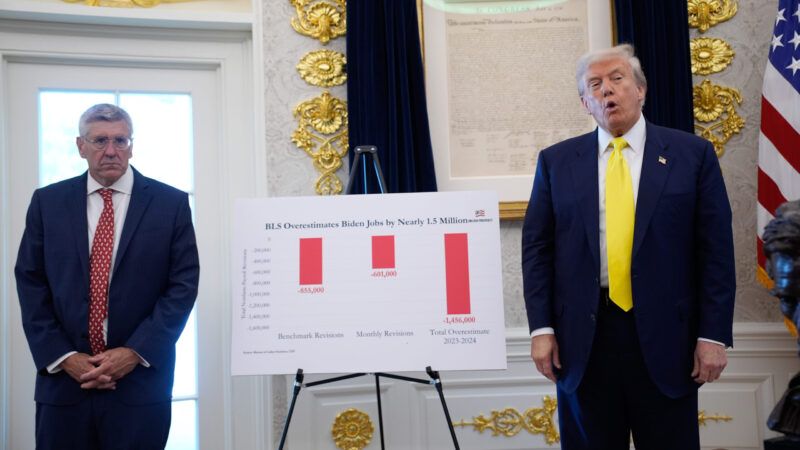You Can Still Trust the BLS—for Now
The accuracy and reliability of BLS data on inflation and jobs will depend on what the Trump administration does with it.

The trustworthiness of the Bureau of Labor Statistics' (BLS) data on inflation, employment, wages, productivity, and consumer spending has historically been a concern only for cranks and conspiracy theorists. Unlike many other nations, the United States has long been able to shield its government data collection processes from partisan political wars. We may debate who is to blame for employment trends, yet no credible critic would argue that the BLS is faking the jobs numbers. That is, until President Donald Trump fired BLS Commissioner Erika McEntarfer in August in response to a weak jobs report that Trump claimed was "rigged." Trump then nominated as a replacement E.J. Antoni, a Heritage Foundation economist widely considered to be a partisan apparatchik with scant qualifications in labor economics. Antoni's nomination was pulled in October due to bipartisan Senate opposition.
Republicans have since attacked the BLS' monthly jobs reports for requiring subsequent revisions. However, such revisions are a feature, not a bug. In order to measure 163 million workers out of 340 million Americans, the BLS surveys establishments and households. However, delayed replies and declining response rates mean that an initial monthly estimate will be revised as later survey responses arrive. Avoiding these future revisions would require skipping the initial jobs reports altogether and waiting months until a critical mass of surveys has been received—a point at which a given month's jobs data would be too outdated to be useful.
Despite declining response rates, the BLS' track record is remarkably strong. Out of 163 million employed Americans, revisions typically approximate just 0.1 million. And despite common assertions otherwise, the subsequent revisions show no sustained pattern upward, downward, or in support of a single political party. While BLS faces data response challenges, there is no basis to doubt its overall trustworthiness.
Perhaps, that is, until now. Rather than try to improve the BLS, the Trump White House seems to be sabotaging it. It empowered the Department of Government Efficiency to lay off data collectors—and proposed deep additional cuts to personnel and funding. It disbanded its (unpaid) working groups of outside economists and statisticians who were advising the BLS on data improvements. It has delayed the release of a key annual report tracking consumer spending. Trump fired one well-respected commissioner while trying to install a replacement who lacked any notable publications record in labor economics. And of course, firing one BLS commissioner for releasing jobs data that did not flatter the president sends a loud message about the performance expectations for whoever becomes the next commissioner.
That said, faking jobs data would be extraordinarily difficult. The BLS' data collection involves more than 1,000 permanent employees who would surely blow the whistle on data manipulation. Moreover, various databases—such as totals and countless subgroup breakdowns—would be quickly exposed by outside data analysts if they did not perfectly align together. Instead of the BLS outright rigging the numbers, we may see fewer jobs reports, and more changes to the timing and manner of various data reports in order to obscure bad news. (The White House is already planning to skip the October jobs report rather than backfill the data as the government reopens.) With the jobs market softening, we may soon discover how the White House tries to obscure bad news.
The BLS data has long been trustworthy. Whether that continues will depend on the actions of the Trump administration.
